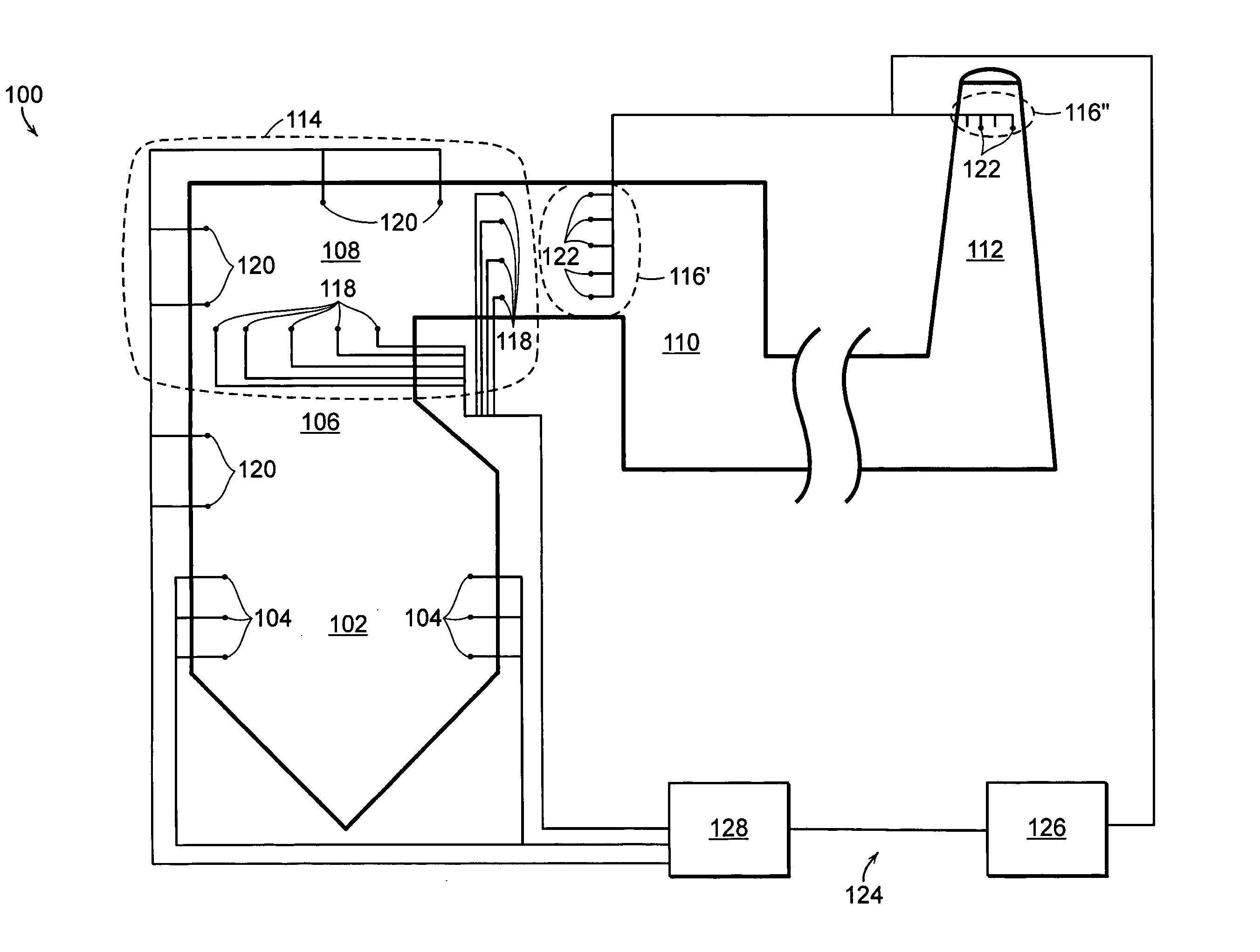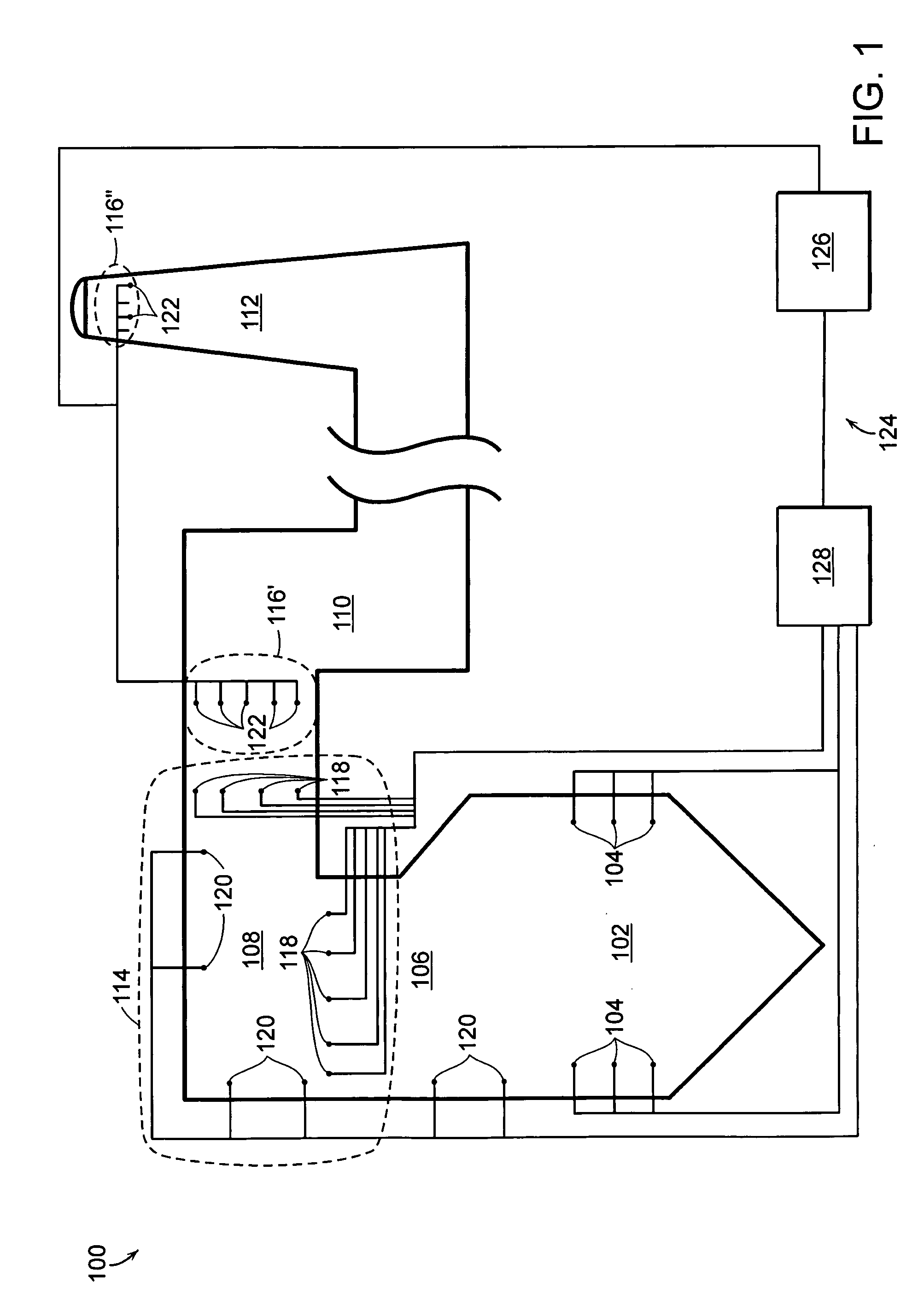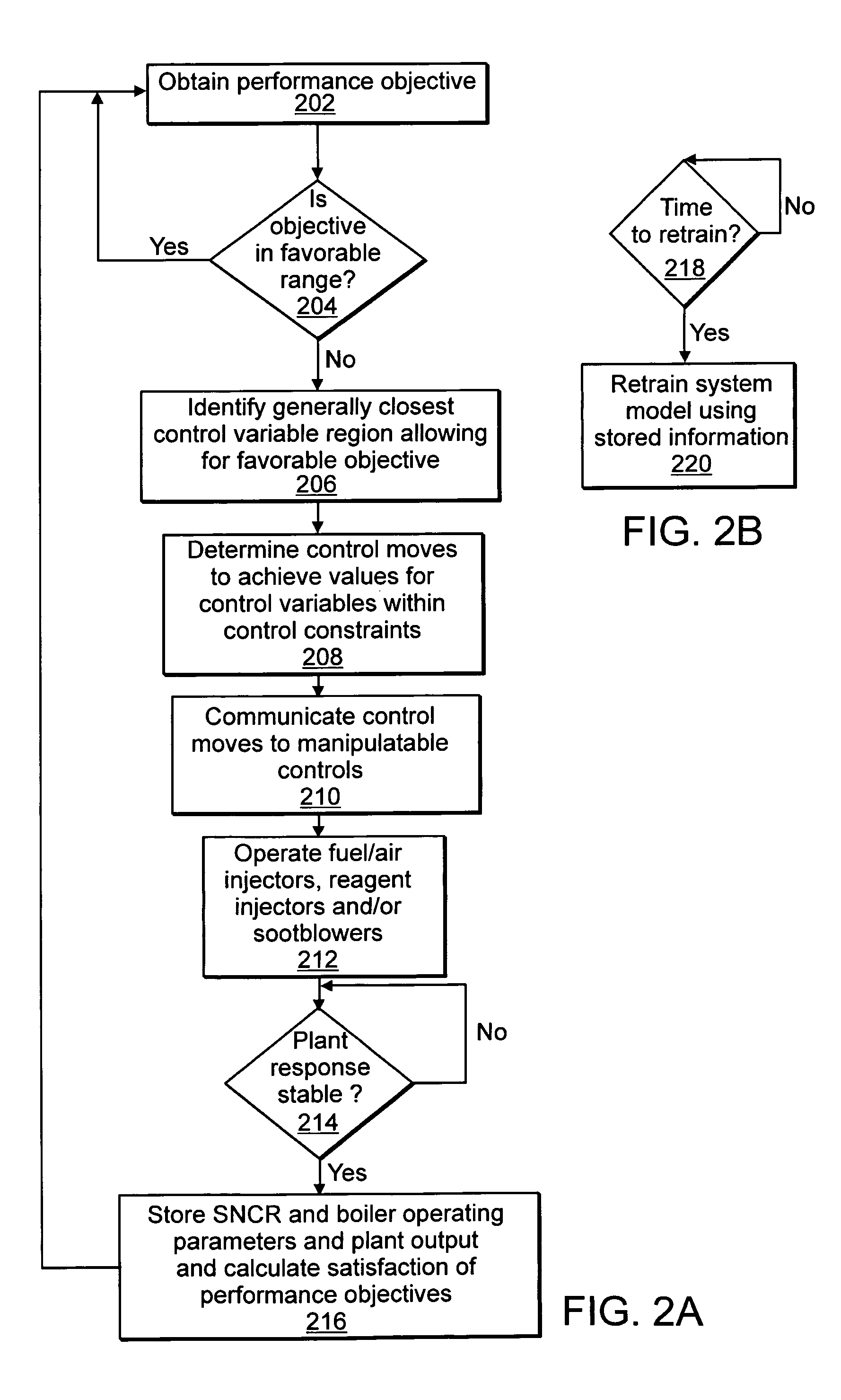Method and system for SNCR optimization
a technology of sncr and optimization method, which is applied in the direction of emission prevention, separation process, instruments, etc., can solve the problems of ozone, a toxic gas, and subject to complex variability, and prevent the most practical sncr application from achieving greater than 30-60% nox reduction
- Summary
- Abstract
- Description
- Claims
- Application Information
AI Technical Summary
Benefits of technology
Problems solved by technology
Method used
Image
Examples
Embodiment Construction
[0025] Briefly, in accordance with one or more embodiments of the invention, a method is provided for controlling SNCR performance in a fossil fuel boiler. The method features the steps of: obtaining a performance goal for the boiler; obtaining data on current boiler performance; determining whether the performance goal is satisfied by the current boiler performance; when the performance goal is not satisfied, identifying the generally closest operating region in which the performance goal would be satisfied, the operating region being associated with desired operating parameters of one or more devices affecting SNCR performance; determining one or more control moves using the desired operating parameters of the one or more devices for directing the boiler to the operating region; and communicating the one or more control moves to the one or more devices.
[0026] In accordance with one or more further embodiments of the invention, a system is provided for controlling SNCR performance...
PUM
| Property | Measurement | Unit |
|---|---|---|
| temperature | aaaaa | aaaaa |
| temperatures | aaaaa | aaaaa |
| reaction rate | aaaaa | aaaaa |
Abstract
Description
Claims
Application Information
 Login to View More
Login to View More - R&D
- Intellectual Property
- Life Sciences
- Materials
- Tech Scout
- Unparalleled Data Quality
- Higher Quality Content
- 60% Fewer Hallucinations
Browse by: Latest US Patents, China's latest patents, Technical Efficacy Thesaurus, Application Domain, Technology Topic, Popular Technical Reports.
© 2025 PatSnap. All rights reserved.Legal|Privacy policy|Modern Slavery Act Transparency Statement|Sitemap|About US| Contact US: help@patsnap.com



